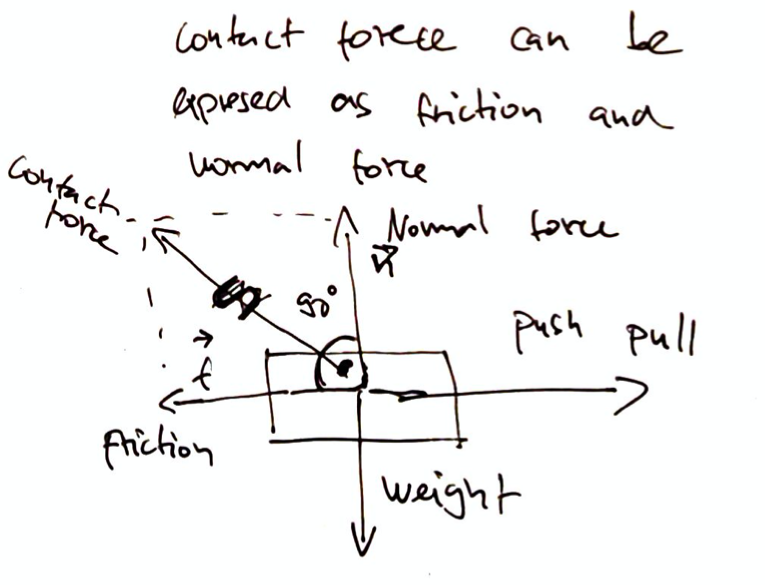Contact Force¶
Friction and normal force are contact forces. Here we describe what happens to objects if we apply force to them.
We can decompose contact force into two parts
normal force \(\vec{n}\)
friction \(\vec{f}\)

We can divide friction into
\(f_k\) kinetic friction, associated with moving objects
\(f_s\) static-friction, associated with objects at rest
If we push something in general we require more force to get it moving than to keep it moving.
Kinetic friction¶
The magnitude of kinetic friction force \(f_k\) usually increases when the magnitude of the normal force \(n\) increases. (We need more force to move something heavy). Thus \(f\) is approximately proportional to the magnitude of the normal force:
\(\mu_k\) is the coefficient of kinetic friction
The kinetic coefficient is smaller for more slipper surface. This coefficient is only an approximation to events that happen on microscopic scale, booth normal and friction results from intermolecular forces in places of contact.
Static friction¶
As we push/pull an object on a floor, it exerts equal opposite force, this force increases as we pull harder until we overwhelm it.

The maximum static friction force that a surface excerpts is defined as \(f_{s,max}\). Similarly to kinetic friction force, static friction is proportional to the magnitude of normal force.
\(\mu_s\) is the coefficient of static friction
We can measure the static and kinetic friction coefficient of an object by placing it onto an elevated wooden surface (plywood sheet).
We find the angle at which the object starts to move, and an angle at which it moves at an constant speed.

The coefficient of static friction is at an angle at which the objects starts to move:
and the coefficient of kinetic friction is at the angle when the object moves at constant speed:
